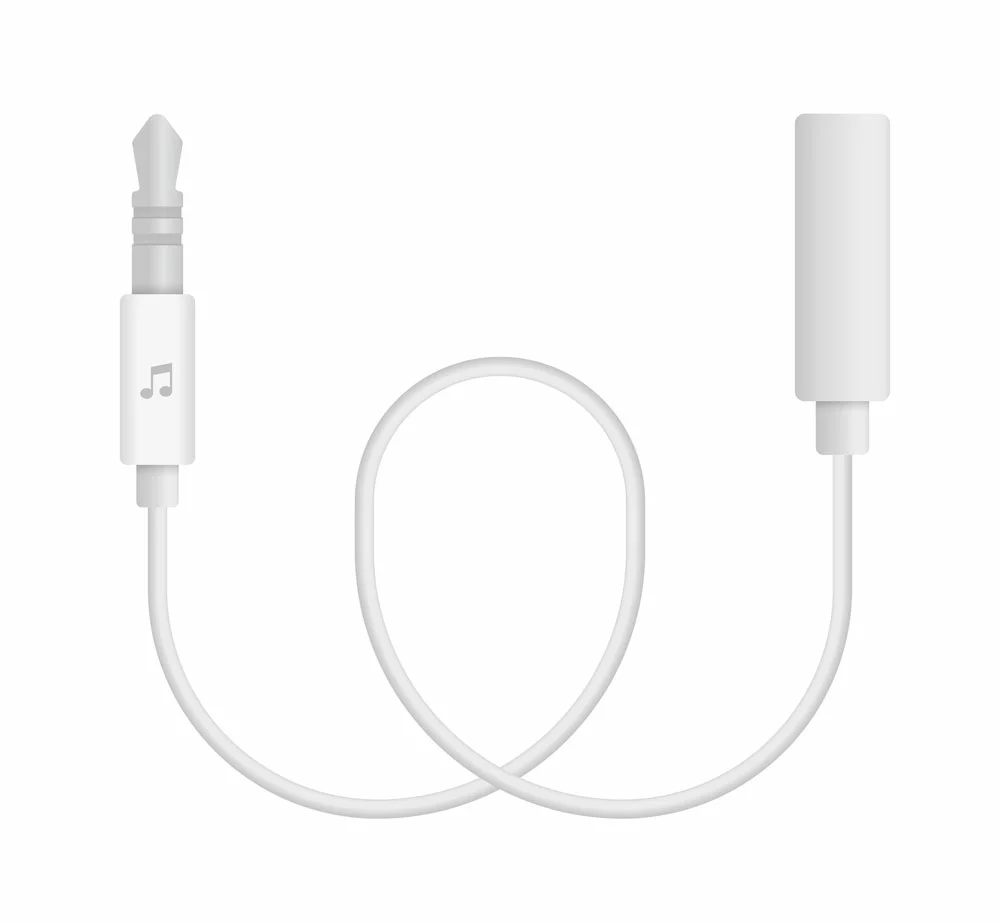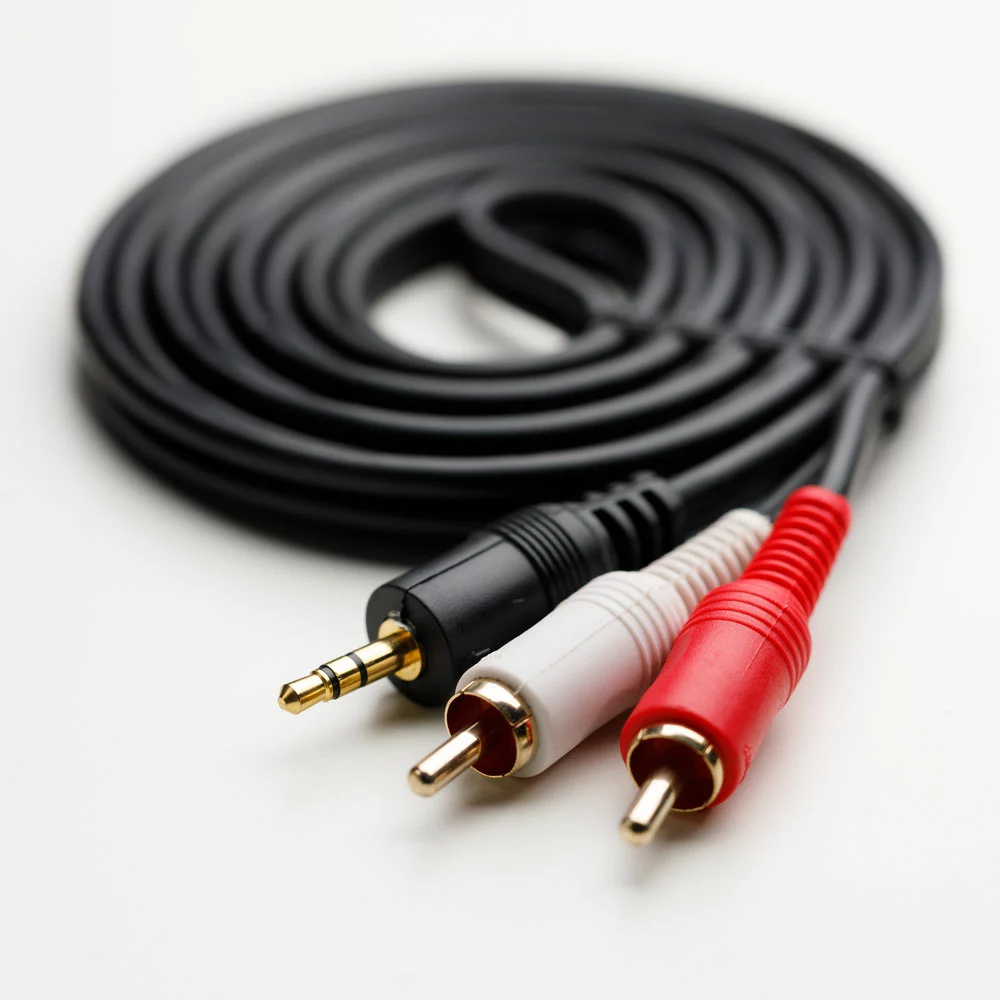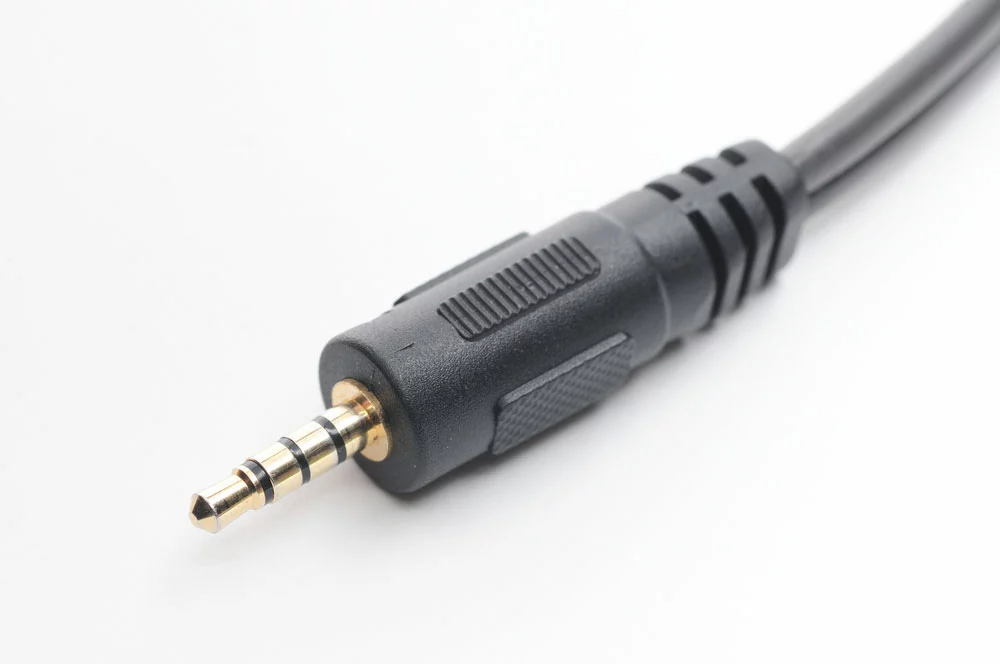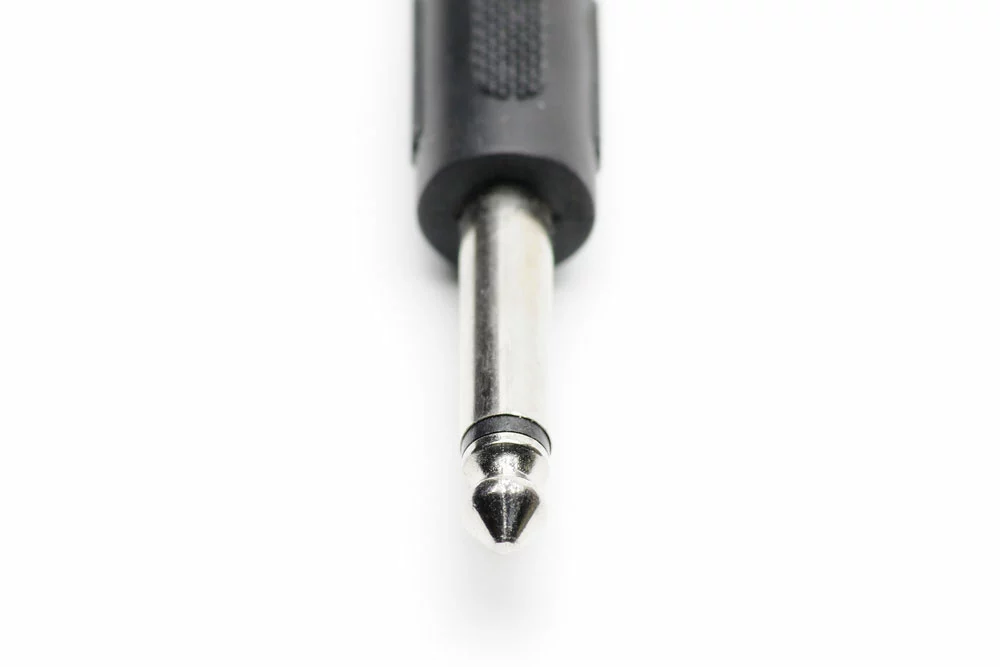About 1/4″ audio cable, For the most part, the phone connector family sends analog audio signals. You may have heard about them as phone jacks, headphone jacks, and audio jacks. As a standard, the male plug fits into a female jack to make a connection.
The phone’s docking port is shaped like a cylinder with a groove at the top to keep it in place. The “sleeve” conductor has a diameter of 6.35mm (1/4 inch) on the outside. The “mini” connector measures 3.5 mm (0.14 in) in diameter, while the “sub-mini” measures 2.5 mm (0.01 in) (0.098 in). Nevertheless, 3.5mm and ¼ inch jacks are popular audio connections.
However, which one is preferable? Let’s find out.
Table of Contents
- What is a 3.5mm Connector or 1/8 inch audio cable?
- What is a 1/4″ Connector/ 6.35mm Cable?
- Differences between 3.5mm and 1/4″
- Can you connect a ¼” Jack to a 3.5mm port & vice versa?
- Conclusion
What is a 3.5mm Connector or 1/8 inch audio cable?
The 3.5mm connector (or “headphone-jack”) is popular in consumer electronics. Laptops, s Smartphones, mp3 players, and similar portable consumer electronics typically use 3.5mm connectors. They are not, however, limited to use on handheld devices.
The 3.5mm headphone jack is found on various audio hardware. It includes audio interfaces, mixing studios, digital-to-analog converters (DACs), and even certain integrated amplifiers.
Here are three popular types of 3.5mm Male connectors.
3.5mm TS Male Connector
Mono audio cables with just two wires use the 3.5mm TS plug. These connectors include dual-cable attachment capabilities. And they can only send one channel of sound at a time. This connector is split in half by a black bar.
TS refers to the tip and sleeve. Tip refers to the end of a 3.5mm TS plug, while the bottom of the plug is referred to as the sleeve. The audio signal is sent through the connector’s tip, while the sleeve serves as ground, which signifies that there is just one usable audio channel when using this connector.
This explains why the 3.5mm TS connector can only transmit one audio signal simultaneously. Hence, it is a monophonic connector.
3.5mm TRS Male Connector
The more modern 3.5mm TRS connector has replaced the TS connector. A 3.5mm TRS male connector uses its three prongs to send unbalanced audio impulses. It is also possible for them to send out mono-balanced signals.
The male 3.5mm TRS plug has three distinct contacts. The “Tip,” “Ring,” and “Sleeve” are the three components. The sleeve is the ground in a typical connector, and the Tip and Ring are the right and right channels, respectively.
3.5mm TRRS Male Connector
The 3.5mm TRRS male connector was developed to accommodate four wires. The four conductors are denoted as follows: the Tip, the Ring, and the Sleeve. It can send analog composite video and stereo audio.
It’s important to note that this connector was created primarily for usage with electronic devices like computers and cell phones. These connectors are included in headphones with built-in microphones and speakers, allowing you to use them as voice amplifiers.

What is a 1/4″ Connector/ 6.35mm Cable?
The 1/4′′ (or “Quarter-Inch”) connector is the “big brother” of the “little brother” 3.5mm connector. When measured in millimeters, the 1/4-inch connector is 6.35 mm. It’s a standard in the world of audio connections. Connectors with a 1/4-inch diameter are also referred to as “headphone jacks,” just like their 3.5mm counterparts.
Most professional audio gear, including audio interfaces, amplifiers, electric guitars, mixers, digital pianos, headphone amplifiers, and speakers, have 1/4″ ports. Professional and consumer-grade audio production equipment both employ 1/4-inch connections on their cords. Cables for instruments, microphones, and headphones are among these.
There are just two types of 1/4″ connectors, in contrast to the many available 3.5mm plugs. So, let’s check them out.
1/4″ TS Connectors
1/4″ TS connectors perform the same duties as 3.5mm connectors. This means our previous comments regarding 3.5mm plugs hold.
The tip and sleeve make up the two halves of a 1/4″ TS connector. They are also designed to send out unbalanced monophonic sounds. It just has one audio channel. Thus you can only send one signal at a time.
1/4″ TRS Connectors
Connectors with a 1/4-inch thread pitch have a balanced tip, ring, and sleeve. Tip refers to the connector’s end, whereas the ring describes the connector segment that they cut in half to create two plastic rings.
Moreover, the connector’s right and left channels are the ring and the sleeve, respectively. That’s why they’re able to transmit stereo sound. Also, the sleeve serves as the ground.

Differences between 3.5mm and 1/4″
When choosing between the two types, you are supposed to compare their characters.
Size
Their size is the most noticeable distinction between 3.5mm and 1/4 inch connections. Extension plugs for 1/4 inches are not only longer but also quite large. The length of a 1/4 inch plug is between 30 and 31 mm, while a 3.5 mm plug is between 14 and 17 mm.
The diameter of 1/4 inch connections is 6.35mm. Therefore, they are bigger than the standard 3.5mm audio jack. Because of its size, 1/4-inch connectors have a sizable contact surface, reducing the possibility of a poor connection with your apparatus. In other words, this gives you a steady sound when recording.
Durability
1/4-inch plugs are more sturdy and long-lasting than their 3.5mm counterparts. For one thing, 1/4-inch plugs and connectors are somewhat bulky. When compared to 1/4-inch connectors, 3.5mm ones are considerably more compact.
1/4-inch connectors are more sturdy because of their size and length. Hence they do not flex or shatter as quickly as 3.5mm connectors. It also makes them more resistant to wear and tear from the frequent plugging and replugging.
Cost
The 3.5mm plug is a miniature version of standard audio jacks. Compared to standard 1/4-inch connectors, these quality is noticeably lower. Additionally, the 3.5 mm cables included are rather slender.
The gauge of these wires is very thin. Ultimately, all these things affect how much 3.5mm cables cost. Cost-wise, 3.5mm cables win out over their 1/4″ counterparts. Only a few dollars are required to purchase one.
Usability
The 1/4-inch jack is the standard in the music industry, while the more compact 1/8-inch jack is more common in consumer devices. Because of its reliability, the 1/4-inch jack is commonly used in consumer electronics and professional audio equipment. A 1/4 inch is much less likely to flex and break.
However, this is not the case with smaller wires and plugs. Because of frequent bending, one might lose count of the number of 1/8-inch jacks they will break over the years.
In addition, 1/4-inch jacks can withstand more power than their smaller counterparts. However, 1/8-inch jacks will do the trick when working with portable gear.
Sound quality
The sound quality is identical in both cases. I came to the same conclusion that size is the only real distinction. Portable devices typically have thinner jacks.
The jack on home and studio systems is typically more robust. The 1/4-inch jack is more secure and less likely to come loose while recording, in my experience.
However, remember that the 1/8-inch jack is standard on portable high-end devices and amplifiers. Therefore, there is no audible difference between the various currents.
Simply put, a 1/4-inch jack is stronger, more sturdy, and, to be honest, more pleasurable to plug in.
We asked a dozen people for mass opinion to see if they could tell the two apart sonically. They have all responded that they don’t see any change. In truth, adapters are a standard issue with high-end headphones, so the only real distinction is an inconvenience.

Can you connect a ¼” Jack to a 3.5mm port & vice versa?
The 3.5mm audio connector is compatible with the standard 1/4″ jack. Similarly, you can attach a 1/4″ connector to a 3.5mm jack. You only need a 1/4″ to 3.5mm converter. Adapters that convert a 3.5mm signal to a 1/4″ jack are widely available.
Thus, if you’re an expert in the field of audio, they’re an indispensable resource. They may prove useful in a pinch, and the price is quite reasonable.
You can purchase these converters for around $5. Hence, they are efficient and ensure that you successfully convert sound signals. Moreover, there are other options available as well. Pick an option that serves your needs and circumstances.

Conclusion
The physical size of 1/4-inch and 3.5 mm jacks is the main difference between the two. Consumer gadgets often use the smaller 3.5mm jack, whereas professional equipment uses the bigger 1/4-inch jack.
Regardless of the kind, the standard heavy-duty contacts deliver top-notch signal performance, and the durable construction is perfect for use in a professional audio setting.
Here at Cloom, we offer a wide range of audio cable options. Hence, you get what you need and don’t have to worry about perfection.
